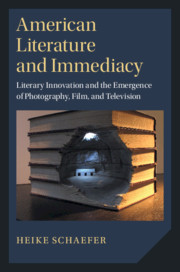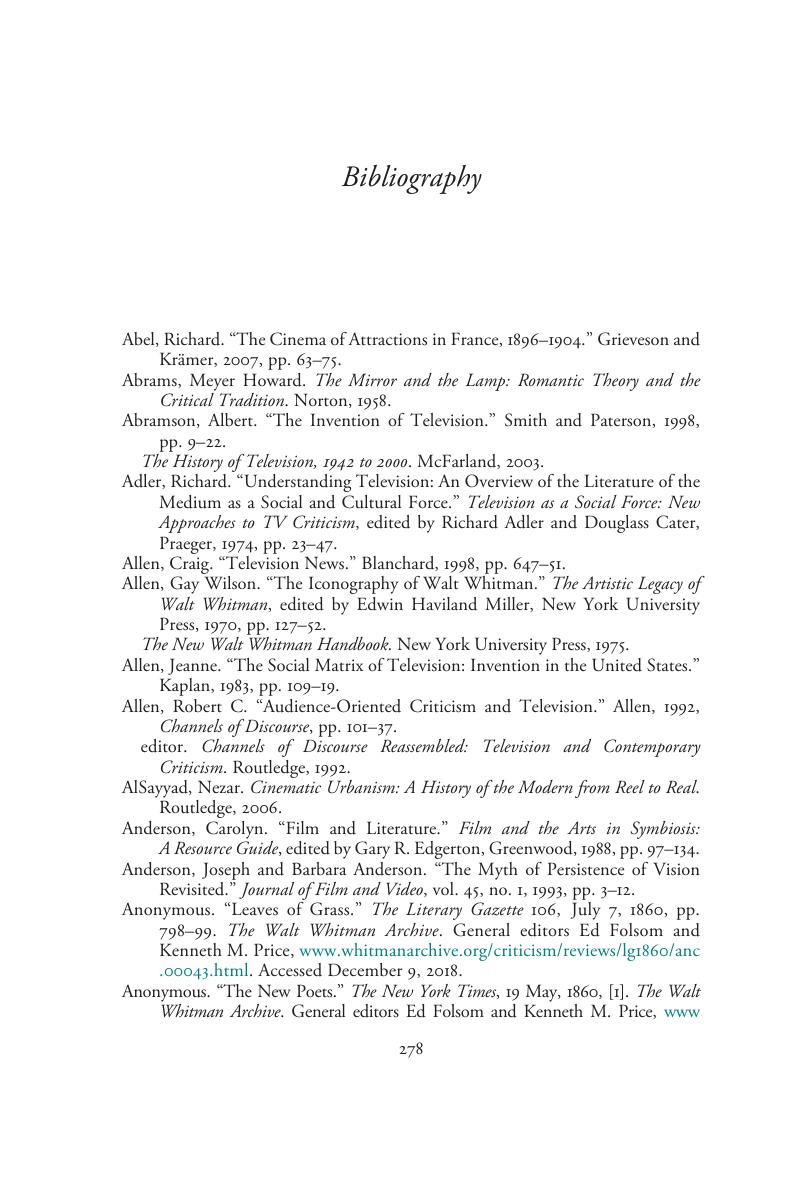 American Literature and Immediacy
American Literature and Immediacy Book contents
- American Literature and Immediacy
- Cambridge Studies in American Literature and Culture
- American Literature and Immediacy
- Copyright page
- Dedication
- Contents
- Acknowledgements
- The Quest for Immediacy in American Literature and Media Culture
- Part I Literary Immediacy and Photography
- Part II Literary Immediacy and the Cinema
- Part III Literary Immediacy and Television
- Notes
- Bibliography
- Index
- Series page
- References
Bibliography
Published online by Cambridge University Press: 19 December 2019
- American Literature and Immediacy
- Cambridge Studies in American Literature and Culture
- American Literature and Immediacy
- Copyright page
- Dedication
- Contents
- Acknowledgements
- The Quest for Immediacy in American Literature and Media Culture
- Part I Literary Immediacy and Photography
- Part II Literary Immediacy and the Cinema
- Part III Literary Immediacy and Television
- Notes
- Bibliography
- Index
- Series page
- References
Summary

- Type
- Chapter
- Information
- American Literature and ImmediacyLiterary Innovation and the Emergence of Photography, Film, and Television, pp. 278 - 306Publisher: Cambridge University PressPrint publication year: 2020


